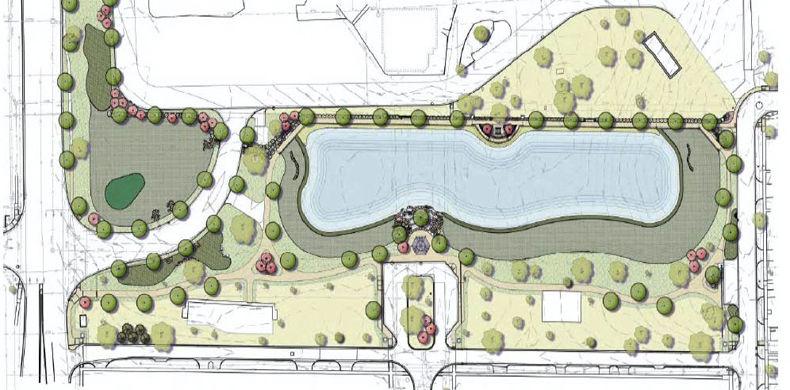Boneyard Creek Plans in Urbana
Boneyard Creek is a 3.3-mile-long (5.3 km) waterway that drains much of the cities of Champaign and Urbana, Illinois. It is a tributary of the Saline Branch of the Salt Fork Vermilion River, which is a tributary of the south-flowing Vermilion River and the Wabash River.

image source: "How we remembered Boneyard Creek", from Smile Politely, accessed on 11/17/2019
Problems
Historically, the central Illinois area of Champaign and Urbana was once a mixture of prairie and marshes. As the villages became cities, and became more and more paved and roofed, more and more water - after storms - ran into the Boneyard than before and more quickly.
Plans
The 1978 Boneyard Creek Master Plan
- Addresses management of the Boneyard Creek waterway in both Urbana and Champaign.
- Identifies strategies to effect improvements to coincide with development along the corridor.
The 2008 Boneyard Creek Master Plan
- Focuses on the portion of the Boneyard Creek that runs through Downtown Urbana, specifically between Main Street and University Avenue.
- Turns the Boneyard Creek into an amenity to the Downtown environment..
Benefits
- Create a network of pedestrian and bicycle connections
- Improve water quality and flood control
- Enhance the local community
- Protect and enhance wildlife and habitat
- Provide spaces for active and passive recreation
Reference
Want to read more? Check the LibGuide for Boneyard Creek Project.
Scott Park and the Second Street Detention Basin in Champaign
Problems
Because Champaign County is a very flat place, controlling stormwater runoff is very critical to prevent flooding.
Plan
The Boneyard Creek Improvement Plan
- Two retention basins with a total storage capacity of 47 acre-feet manage runoff from a 100-year storm while providing over 5 acres of open space for recreational use during non-flood conditions.
- Includes both above- and below-ground stormwater detention to increase the level of flood protection and provide detention capacity sufficient to support future development
- In Scott Park, a bioswale and rain garden work together to drain and filter the first flush of water from the adjacent parking lot.
- Terraces constructed from natural stone are strategically positioned within the basins, allowing visitors to explore the various aspects and contours of the site.
- Improvements along the creek include pedestrian pathways, overlooks, plazas, gateways, streetscape, parking and bridge enhancements.

image source: West Washington Street Watershed Master Plan, City of Champaign, accessed on 11/17/2019
Benefits
- Improve physical characteristics and water quality in the creek.
- Improve flood control and habitat value
- Create storm water detention in a mixed-use urban environment
- Provide recreational amenities connecting the University of Illinois campus, a public park, residential and commercial districts, and an enlivened downtown retail and dining area
- Provide the first complete bike path connection between the University of Illinois campus and downtown Champaign.
- Provide educational and volunteer opportunities for the community
Reference